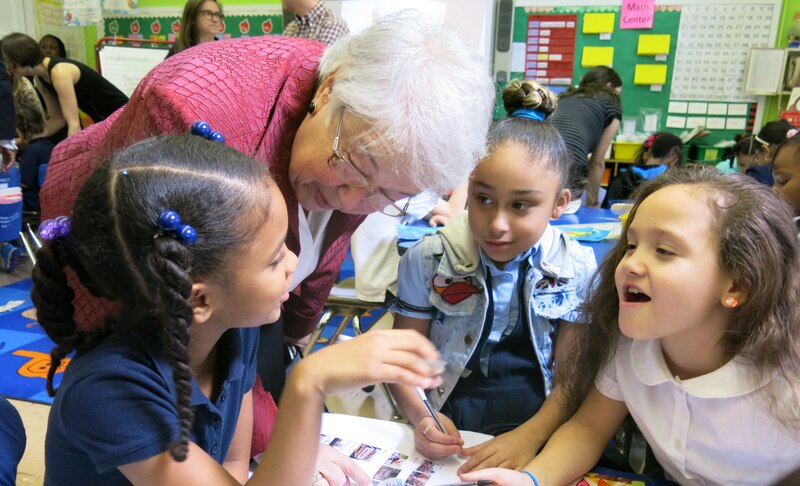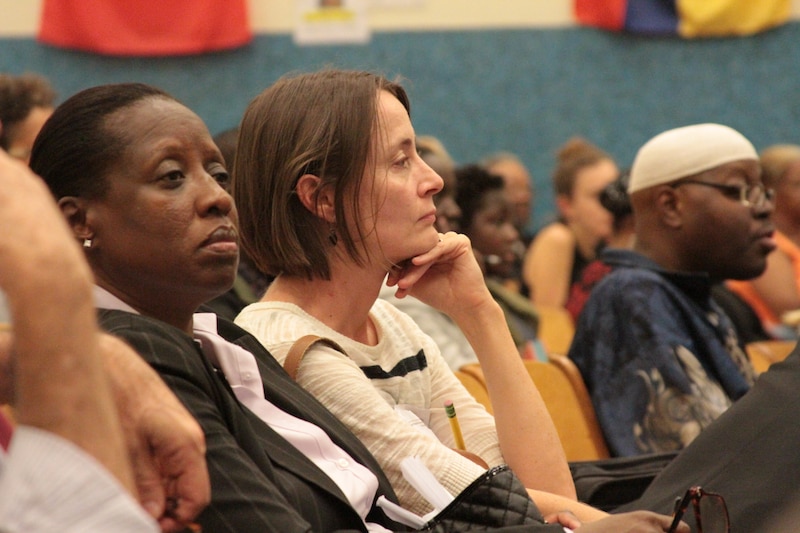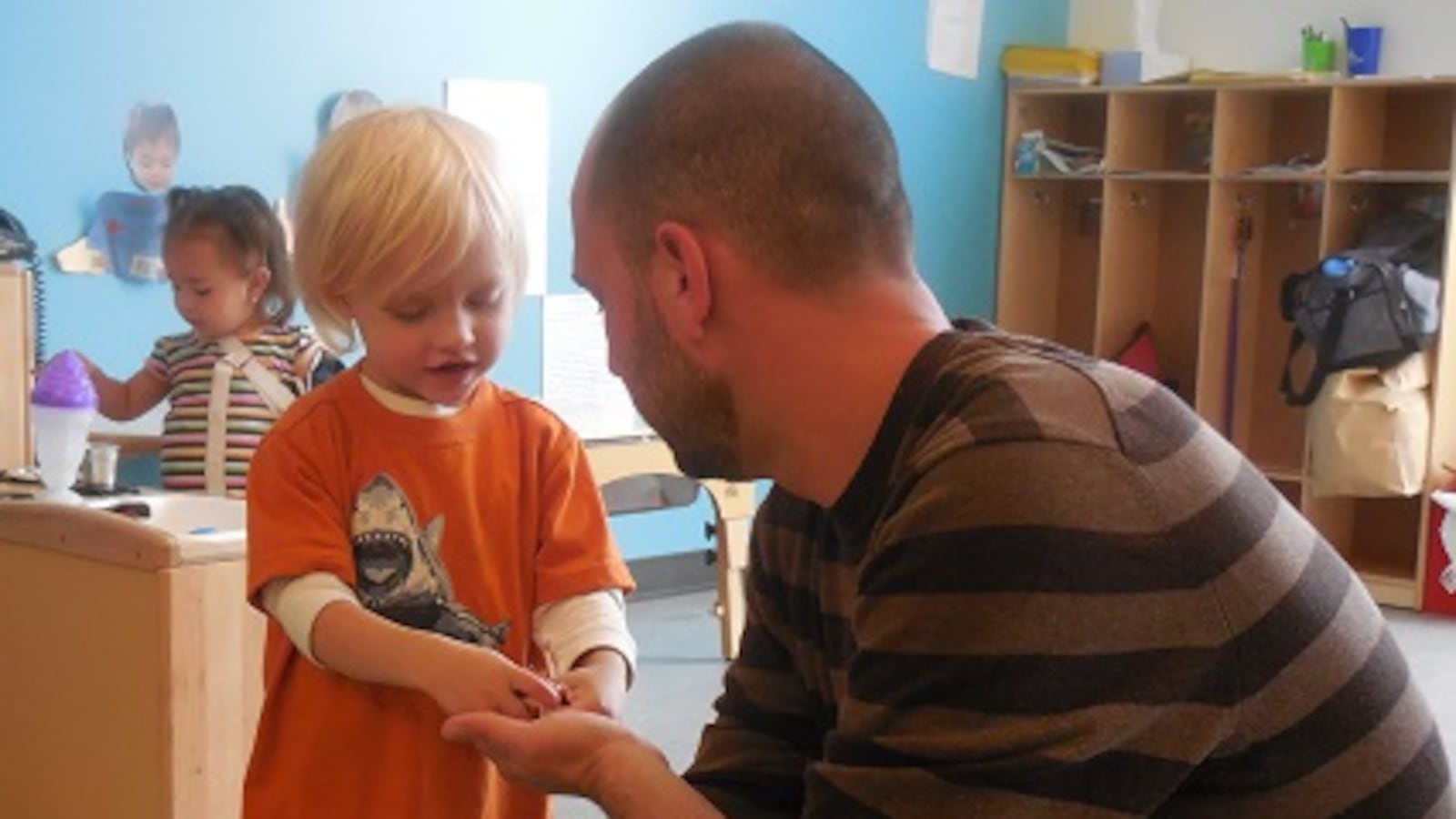As John King prepares to take over the U.S. education department, 20 schools across New York are poised to put his final experiment as the state’s education chief to the test: a program that aims to revamp struggling schools by integrating them.
At one of the schools, P.S. 15 in Manhattan’s East Village, low test scores have made it a target for possible state takeover. Last year, nearly half the students were also homeless. Nine in 10 qualified as low-income.
“When you have a mix of students and everyone’s learning from each other, the school can do better,” said P.S. 15 Principal Irene Sanchez. “When you have kids with trauma and everyone’s in that same state, it’s hard.”
For the first time, King’s $25 million grant program would allow the city to try to improve P.S. 15 and seven other bottom-ranked schools by convincing more affluent families to send their children there. Experts say they know of no other state program using school-improvement money from the federal government to encourage integration.
For that reason, and because President Obama chose King last week to head up the federal education department, experts say the program could be replicated across the country if it is successful.
“My hope is that this approach will become a national model,” said Richard Kahlenberg, a senior fellow at the Century Foundation and a longtime proponent of socioeconomic school integration. “It’s very exciting.”
But it’s far from certain that the initiative will spur much integration in the nine local districts that won grants in New York, which a 2014 analysis found to have the nation’s most segregated schools.
Districts had just weeks to apply for the relatively small grants, which were not competitive and came with restrictions. Partly as a result, several districts quickly added integration components to school-improvement initiatives they had planned even before the grant program was announced, according to people who have seen the applications, which city and state officials have not released.
In New York City, most of the proposals are for part-time magnet programs, where students from different schools and perhaps backgrounds would work together for part of the day or after school. Two applications co-written by parent leaders — including P.S. 15’s — mention possible district-wide enrollment policy changes, but city officials have signaled to parents that they only want to make changes at the targeted schools.
Susan Eaton, a Brandeis University professor and author who has written extensively about school integration, said it was “courageous” for King and the state education department to try to tackle the state’s deep-rooted school segregation. With greater political support and funding, the program could eventually spur more far-reaching efforts, she added.
However, she said that she and others whom the state asked to review the initial proposals questioned whether they would make a “meaningful dent” in segregation in those districts.
“I think it fell short,” Eaton said, “not just of my hopes, but of people in the administration as well.”

A single fix for two pressing problems
King’s program has drawn national interest because it offers a single solution to two education riddles that have long bedeviled policymakers: chronically low-performing schools and school segregation.
The approach departs from the most common tactics for improving schools, such as extending the school day or hiring new teachers, which don’t focus on student enrollment. It also tacitly recognizes that concentrated student poverty can hamstring schools, which some policy experts have long cited as a reason to reduce the share of poor students at low-performing schools.
“Almost all of these struggling schools are high-poverty schools,” said Kahlenberg, the integration researcher, who was one of the experts to review the grant applications. “So a much more transformative approach is to attack segregation directly.”
Low-performing schools where at least 70 percent of students are considered poor were eligible for the three-year grants, which offer up to $1.25 million per school. The schools will develop magnet programs with the potential to attract higher-income students, including dual-language, arts, or schoolwide gifted programs.
King had pushed New York City officials to reduce school segregation several times before the grant program was announced last December. It proved to be his final act as state commissioner before moving to the U.S. education department, which he will take charge of this year after current Education Secretary Arne Duncan steps down.
King plans to keep his eye on the program from his new post. At a recent school diversity conference, he said the federal agency will “look for opportunities to expand” New York’s program.
“We need as a country to utilize multiple strategies to raise student performance” at struggling schools, he told Chalkbeat. “One strategy that has a long history and substantial evidence is school integration.”
New York City’s plans for six segregated schools
Nestled next to a stretch of low-rise public housing a few blocks north of Central Park, Frederick Douglass Academy II has watched newcomers stream into the neighborhood over the past decade. Between 2000 and 2010, the area’s white population more than quadrupled.
Yet few of those newcomers have ventured into FDA II, which remains almost entirely black and Hispanic. Last year, just 1 percent of its high school students were white, while none of its middle schoolers were.
"When you have kids with trauma and everyone’s in that same state, it’s hard."
P.S. 15 Principal Irene Sanchez
“It’s like they disappear,” said Fatou Sarr, a FDA II sophomore, one day after school. “All I see is one race.”
To convince more affluent families — including some of the white newcomers — to enroll their children there, FDA II will develop new labs where students from higher-income partner schools will come to work on science, engineering, technology, and math projects. Students at the collaborating schools will also venture out on joint research trips and the target school students will take STEM summer classes at a college campus, according to city education officials.
Two Bronx middle schools, the Bronx Writing Academy and I.S. 117, have similar plans.
Meanwhile, students from three Brooklyn high schools — Boys and Girls, George Westinghouse, and the High School for Global Citizenship — will join students from partner schools to take half-day, career-focused classes at a new learning center at the Brooklyn Navy Yard, officials said. Students will also be able to take some classes at their partner schools.
The goal for both sets of schools is twofold, officials said: to get students from different socioeconomic backgrounds working together, and to convince a more diverse group of students to enroll at the target schools.
FDA II Principal Osei Owusu-Afriyie said he hoped that parents of the partner-school students would come to see FDA II as a worthy school for their children after they spend time in FDA II’s new research lab. That could help shrink the school’s share of low-income students, he said, who now make up nearly 80 percent of the enrollment.
“We want to make sure that families in our neighborhood — regardless of their income — look at this as a viable option,” he said.

For two other schools, parents have broader ambitions
At M.S. 113 Ronald Edmonds Learning Center, a state-identified struggling school in the heart of swiftly gentrifying Fort Greene, Brooklyn, 85 percent of students qualified as low-income last year.
Less than two blocks away, the Academy of Arts and Letters’ share of poor students is half that, according to state data.
Parents and the local superintendent applied for one of the integration grants in order to pull more of the wealthier students to M.S. 113 by offering an English-Spanish dual-language program. But the parents in District 13 who helped win the grant say one new program isn’t enough to prevent imbalances like the one between M.S. 113 and Arts and Letters.
The applications there and in Manhattan’s District 1, where P.S. 15 is located, also proposed centers where parents could go for information about school admissions and a series of public meetings to brainstorm ideas for broader enrollment changes. Their ultimate goal is to help develop district-wide enrollment systems that would keep poor and affluent students from clustering at separate schools.
One type of enrollment system parents in both districts have floated before is known as “controlled choice.” Under that system, families rank their preferred schools but the city manages the assignment process so that each school’s demographics roughly reflect the district’s.
Michael Alves, who helped design one of the first controlled choice systems when he worked in Massachusetts’ desegregation office, said it’s necessary to pair magnet programs with a district-wide enrollment system in order to avoid what another expert referred to as “whack-a-mole” — when more diversity at one school results in more segregation for its neighbors.
“You just can’t focus on one school,” said Alves, who assisted District 1 with its grant application. “There’s an ecology to integration.”
Just receiving the grant money doesn’t guarantee that the parent leaders can make sweeping changes.
Any enrollment overhauls would require the approval of the de Blasio administration, which has been reluctant to embrace admissions changes as a way to achieve diversity. In District 13, officials are still responding to a backlash triggered by their rezoning plan for two elementary schools near the Brooklyn Bridge, which has underscored the race and class tensions embedded in school admissions rules.
"My hope is that this approach will become a national model."
Richard Kahlenberg, senior fellow at the Century Foundation
In this case, city officials have hinted that they are hesitant to make changes that go beyond the target schools.
The District 1 superintendent has said repeatedly that the state grant is intended just for P.S. 15, according to Lisa Donlan, the district’s former education council president. And with District 13’s application, officials “watered down” language about broader admissions changes, according to that district’s education council president, David Goldsmith.
“In general, there was hesitancy to use language that would acknowledge any kind of district-wide conversation,” he said. “To us, that was incredible — it’s against the spirit of the grant.”
City education department spokespeople provided some details about the plans for the eight target schools, which have already received $2 million in planning money from the state and could receive $8 million more to enact the new programs. They would not say whether the city will consider district-wide changes.
“We’ve worked closely with schools and districts to apply and plan for these eight grants to increase diversity and improve student achievement, and we’ll continue to support their implementation and monitor their progress with this work,” spokeswoman Devora Kaye said in a statement.
Obstacles ahead on the path to integration
Researchers and advocates will be watching closely to see whether the new programs do in fact produce more diversity at the 20 schools across the state.
While many studies have linked magnet programs with student academic achievement, their record on integration has been mixed. Achieving student diversity typically takes carefully planned programs that tap into parent demand, set ambitious enrollment goals, and are aggressively marketed to parents — all of which may have been complicated by the grants’ brief application period and relatively limited funding.
The design of some of New York City’s eight proposals may pose additional challenges.
The city appears to be proposing part-time and “school-within-a-school” magnet programs, where only some students participate in the special courses, which at least one study found generate less integration than whole-school programs. And even with extensive marketing, it may be difficult to convince parents in wealthier precincts to send their children to schools in racially and economically isolated areas such as the South Bronx.
The plans for the Bronx schools say that partner-school students will over time “voluntarily transfer” to the target schools, though there is no explanation of how or why they would do so, according to a person who is familiar with the grant applications. And they make no mention of district-wide enrollment changes, the person said.
Genevieve Siegel-Hawley, an assistant professor at Virginia Commonwealth University who has studied magnet schools, said they work best in conjunction with enrollment systems that factor in diversity like those being proposed by district 1 and 13 parents.
“The best diversity plans are comprehensive and cover a whole district,” she said.
If New York City’s proposals raise questions about how much integration they will achieve, they are not alone. State education department officials acknowledged that the applications they received have limitations.
Spokeswoman Jeanne Beattie said in a statement that some districts took “programs that they desired to implement and have added a socio-economic integration component” to meet the grant requirements, and that they set “initially modest” integration goals. Federal funds specifically earmarked for promoting school integration could help the state push districts for stronger proposals in the future, she added.
Michael Hilton, an education analyst at the Poverty & Race Research Action Council who reviewed some of the applications, said that in this initial, rushed application process, few districts seemed eager to make structural changes. For instance, he said, “nobody seemed really willing to tinker with admissions.” (Schenectady, which officials said did propose admissions changes, is an exception.)
Along with other integration researchers and proponents, Hilton said he is holding out hope for the program, which they consider groundbreaking. Still, he and others worry what will happen if the grants fund projects that are too modest or poorly designed to take on entrenched school segregation.
“Then it’s going to set integration back,” he said, “because we’ll say we tried integration, and it didn’t work.”

